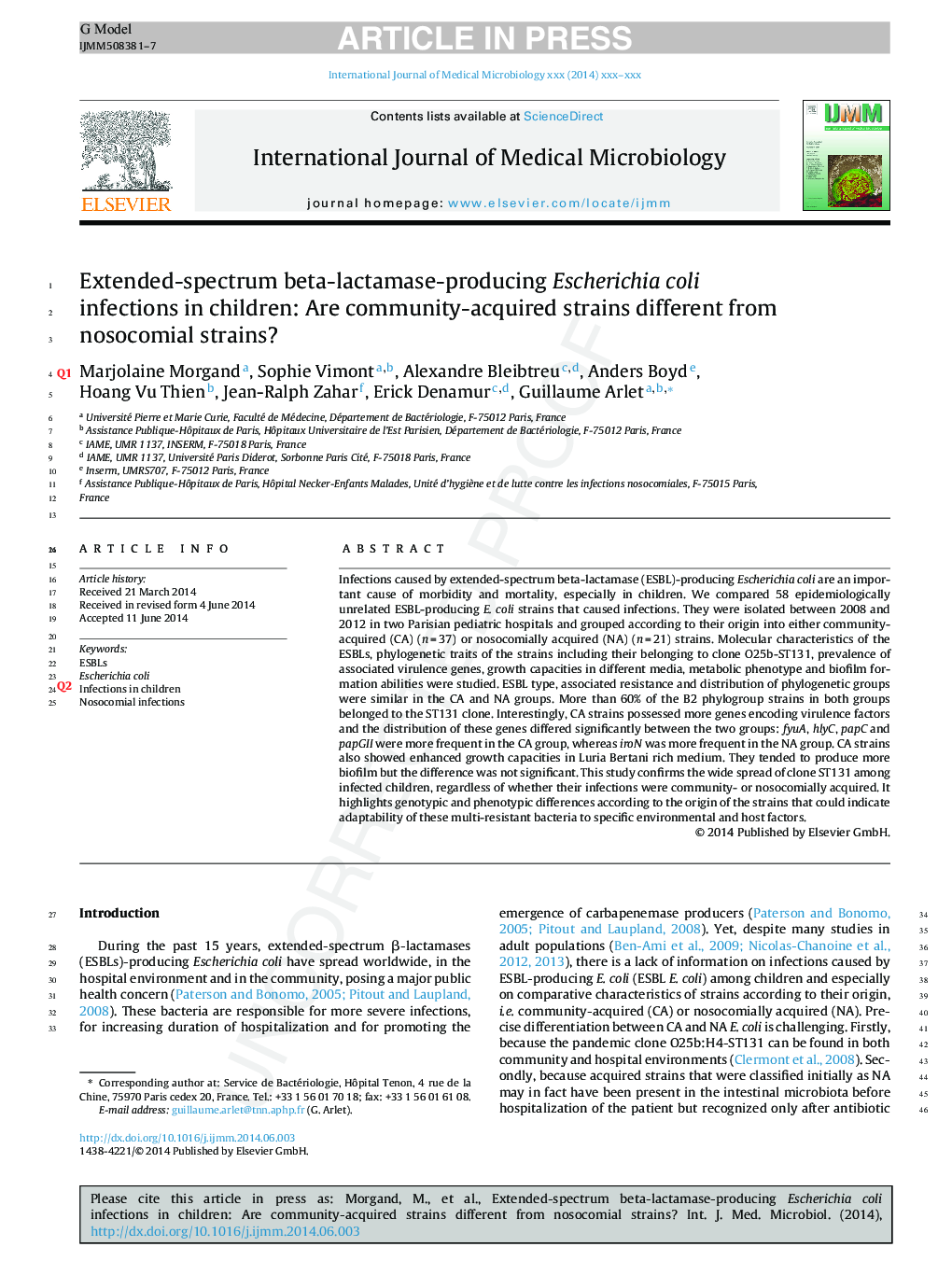| Article ID | Journal | Published Year | Pages | File Type |
|---|---|---|---|---|
| 8385404 | International Journal of Medical Microbiology | 2014 | 7 Pages |
Abstract
Infections caused by extended-spectrum beta-lactamase (ESBL)-producing Escherichia coli are an important cause of morbidity and mortality, especially in children. We compared 58 epidemiologically unrelated ESBL-producing E. coli strains that caused infections. They were isolated between 2008 and 2012 in two Parisian pediatric hospitals and grouped according to their origin into either community-acquired (CA) (n = 37) or nosocomially acquired (NA) (n = 21) strains. Molecular characteristics of the ESBLs, phylogenetic traits of the strains including their belonging to clone O25b-ST131, prevalence of associated virulence genes, growth capacities in different media, metabolic phenotype and biofilm formation abilities were studied. ESBL type, associated resistance and distribution of phylogenetic groups were similar in the CA and NA groups. More than 60% of the B2 phylogroup strains in both groups belonged to the ST131 clone. Interestingly, CA strains possessed more genes encoding virulence factors and the distribution of these genes differed significantly between the two groups: fyuA, hlyC, papC and papGII were more frequent in the CA group, whereas iroN was more frequent in the NA group. CA strains also showed enhanced growth capacities in Luria Bertani rich medium. They tended to produce more biofilm but the difference was not significant. This study confirms the wide spread of clone ST131 among infected children, regardless of whether their infections were community- or nosocomially acquired. It highlights genotypic and phenotypic differences according to the origin of the strains that could indicate adaptability of these multi-resistant bacteria to specific environmental and host factors.
Related Topics
Life Sciences
Biochemistry, Genetics and Molecular Biology
Biochemistry, Genetics and Molecular Biology (General)
Authors
Marjolaine Morgand, Sophie Vimont, Alexandre Bleibtreu, Anders Boyd, Hoang Vu Thien, Jean-Ralph Zahar, Erick Denamur, Guillaume Arlet,
